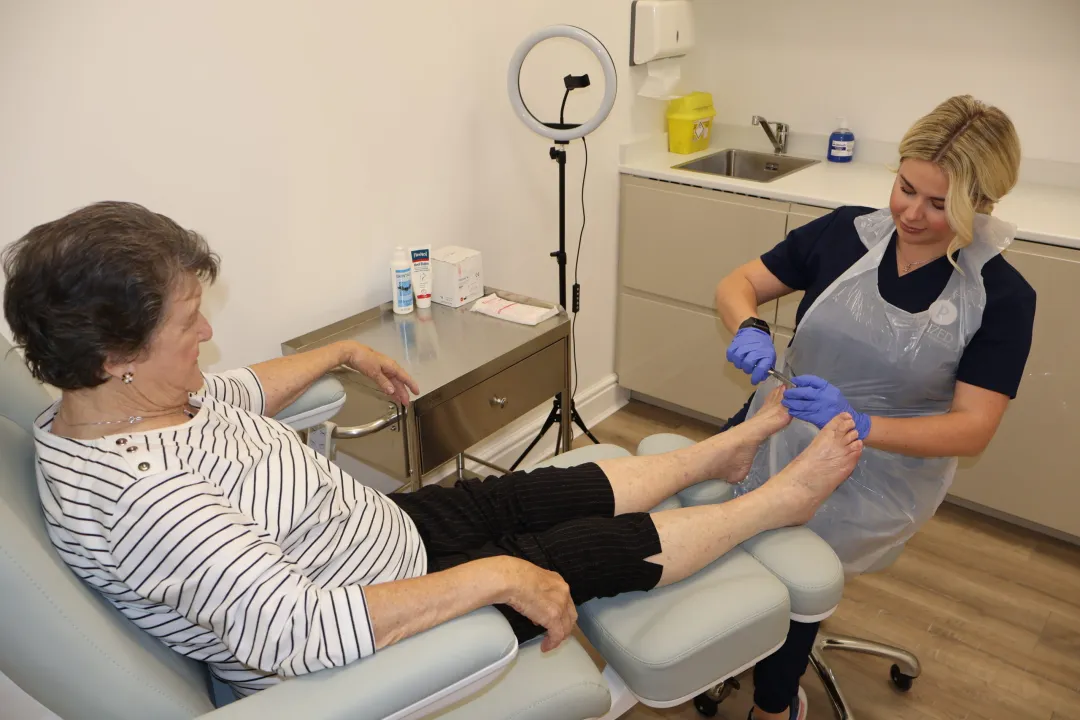Heel pain is a common concern that affects individuals of all ages. It may disrupt daily routines, limit mobility, and reduce overall quality of life. While it may seem like a minor inconvenience at first, ignoring persistent heel pain might lead to worsening discomfort or underlying issues. Most forms of heel pain can be treated with professional podiatric medicine.
What Causes Heel Pain?
Heel pain can arise from various factors, though one specific condition is often identified as the main culprit: plantar fasciitis. This condition occurs when the plantar fascia, a thick band of tissue running along the bottom of the foot, becomes inflamed. The plantar fascia serves as a supportive structure for the arch of the foot. Repeated strain or overuse can damage the tissue, leading to pain and stiffness, particularly near the heel.
Several factors may contribute to the development of plantar fasciitis and similar issues. These may include:
- Prolonged standing or walking: Occupations or activities that involve long periods of standing or walking on hard surfaces can strain the plantar fascia.
- Foot mechanics: Structural factors such as flat feet or high arches can place additional tension on the plantar fascia.
- High-impact activities: Participating in high-impact sports or activities, such as running, can increase stress on the heel.
- Weight changes: Rapid weight gain or carrying excessive body weight may add pressure to the plantar fascia.
The pain caused by plantar fasciitis often manifests as a stabbing sensation near the heel. It tends to be more noticeable after periods of rest or inactivity, such as stepping out of bed in the morning or standing up after sitting for an extended period.
How Does Podiatric Medicine Treat It?
Podiatric medicine offers a range of approaches to address heel pain and promote healing. A podiatrist can assess the underlying causes of the pain and recommend an individualized treatment plan tailored to the patient’s needs. Below are some of the common methods that specialists use:
- Orthotic devices: Custom orthotics can redistribute pressure across the foot and reduce strain on the plantar fascia.
- Physical therapy: A podiatrist may recommend physical therapy to strengthen the muscles surrounding the foot, improve flexibility, and enhance overall foot function.
- Splinting: Using night splints can provide extra support to the arch and maintain the foot in a stabilizing position while resting.
- Medication and anti-inflammatory treatments: Options, such as corticosteroid injections, may be suggested in cases of persistent discomfort.
- Shockwave therapy: Low-energy shockwave therapy stimulates blood flow to the affected area and may promote tissue healing for patients with chronic pain.
Many podiatrists emphasize the use of preventative strategies to reduce the likelihood of recurring heel pain. Future management efforts might include adopting proper footwear, gradually increasing physical activity levels, and incorporating flexibility exercises into daily routines.
Speak to a Specialist About Treatment
Persistent heel pain should not be seen as something to tolerate or manage alone, given the diverse range of treatment options available today. A podiatric specialist can assess your symptoms, identify contributing factors, and guide you through effective interventions suited to your unique needs. If heel pain has been disrupting your daily activities, seek a consultation with a knowledgeable podiatrist to explore potential solutions.
- mylovelyfurryfriend discover expert tips on dog health
- Infectious Diseases Updates – Stay Informed, Stay Protected!
- Wegovy For Weight Loss – A Breakthrough in Managing Obesity!
- Emergency Medicine Forum – A Hub for Fast-Paced Knowledge, Support & Updates!
- Pediatrics Discussions – Insights, Challenges, and Expert Advice for Better Child Health!





Leave a Reply